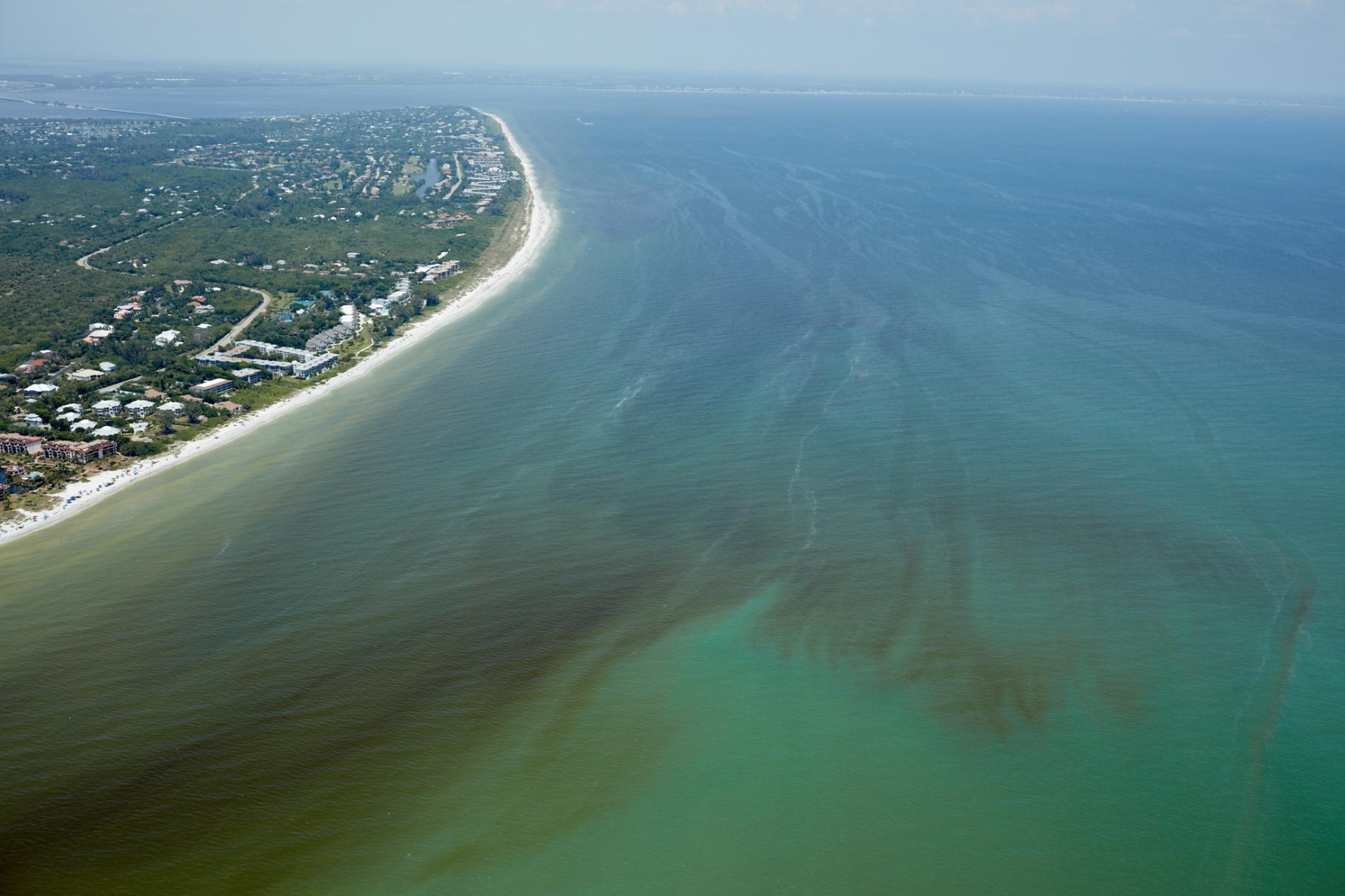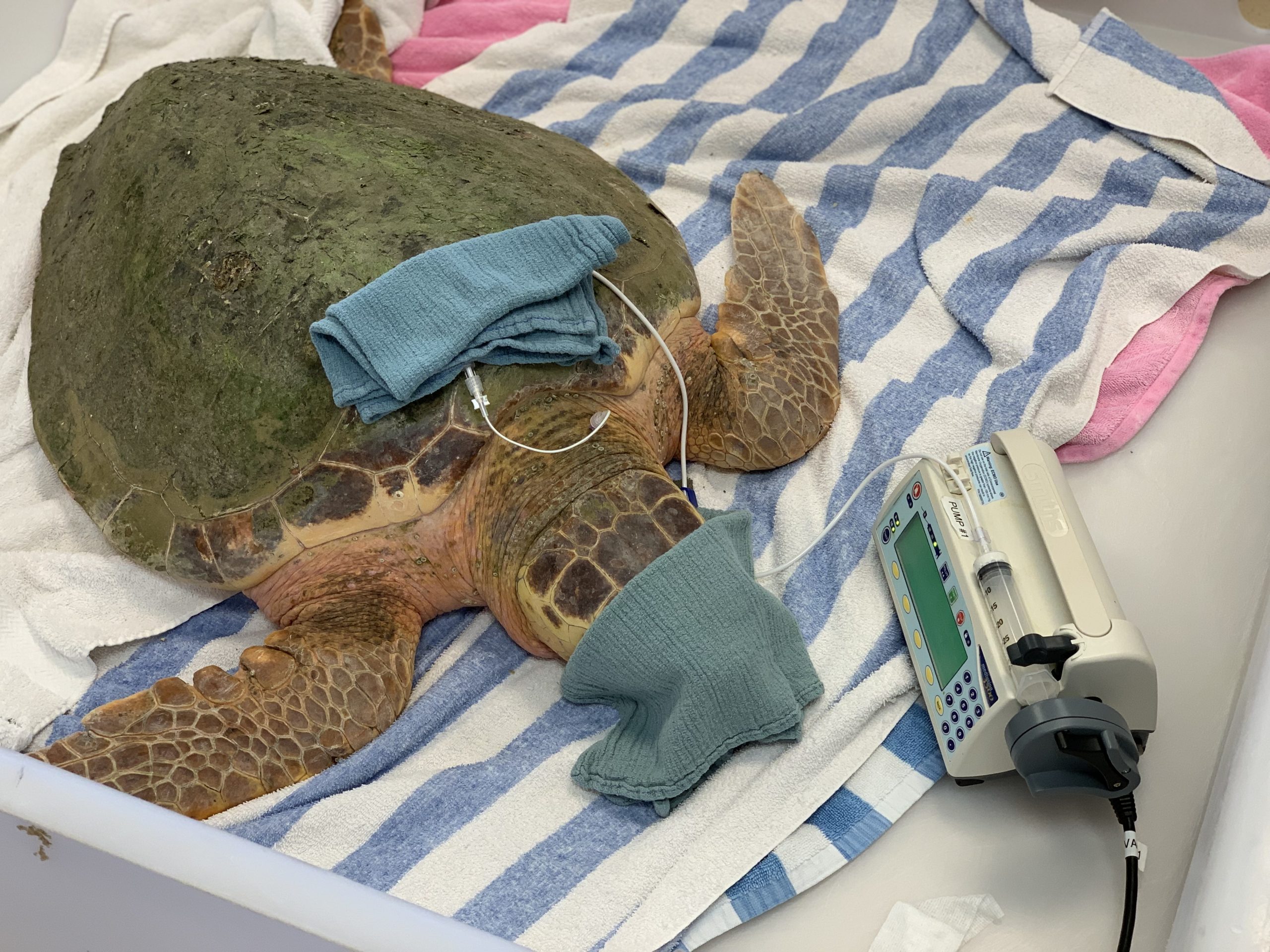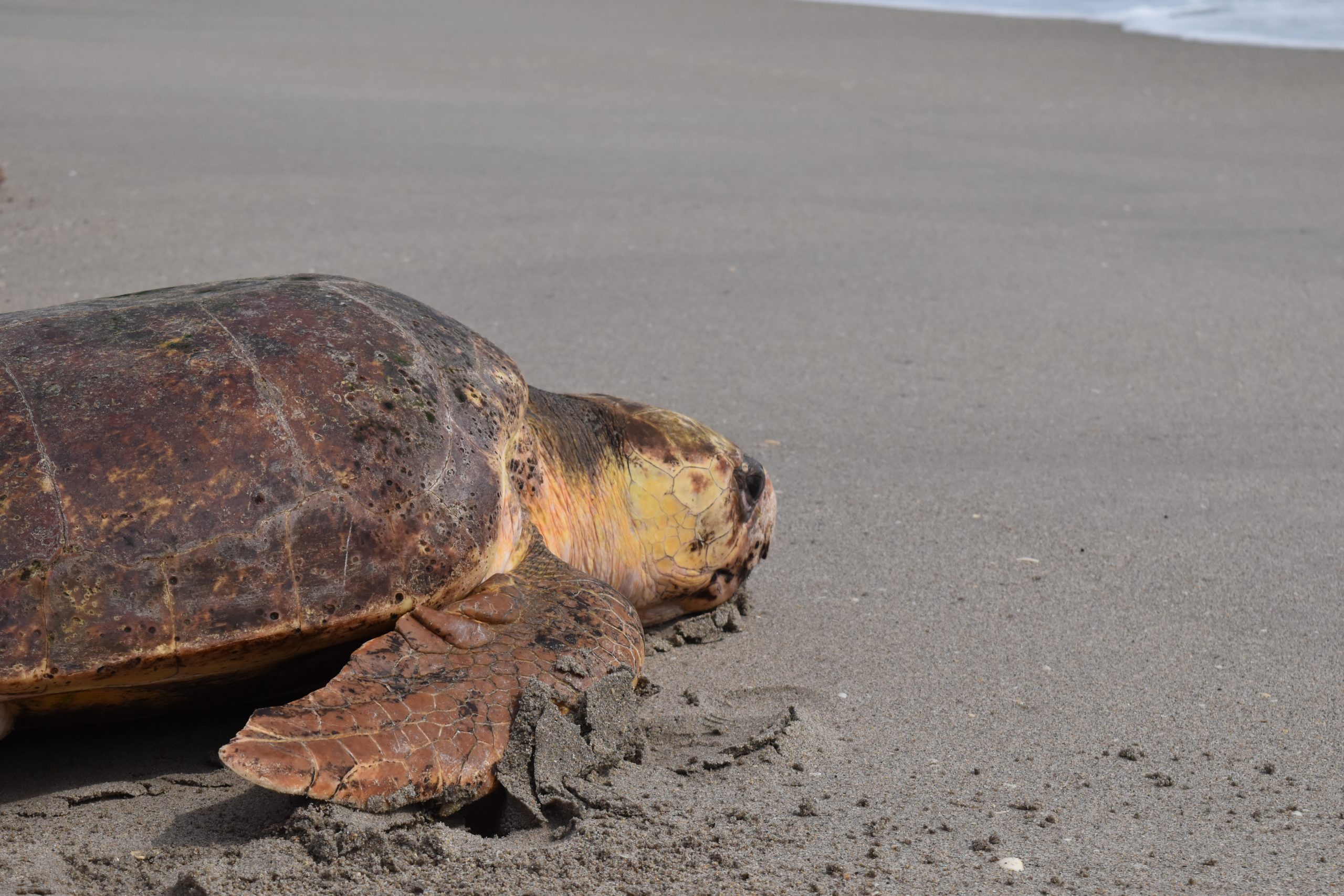Over the past several years, LMC teams have been working to explore new threats facing sea turtles, innovative solutions, and discover positive results. Most recently, our Director of Rehabilitation, Dr. Charles Manire, and Director of Research, Justin Perrault, innovated a new solution to treat sea turtles suffering from red tide exposure.

Red tide, which refers to algae blooms caused by large concentrations of marine organisms known as dinoflagellates, produces neurotoxins that can impact or kill seabirds, fish, marine mammals, and sea turtles. Although red tide occurs naturally in Florida, blooms have been increasing in frequency, size, and duration.
As a result of a bloom this summer, our Center received a unique sea turtle patient, Seiche. The sub-adult loggerhead sea turtle patient, Seiche, was found floating in the Intracoastal Waterway in Stuart, FL before being transported to our facility. Upon arrival, the patient was reported to have been suffering from brevetoxins and saxitoxins, which caused Seiche to experience seizures and disorientation.

Unfortunately, Seiche’s experience is not a rare situation for sea turtles. Due to increasing red tide blooms, researchers across Florida have seen similar case studies. “Within these blooms, we can see up to hundreds of sea turtles that strand annually,” said Dr. Justin Perrault. “Almost 600 sea turtles were stranded on Florida’s west coast during the last red tide bloom from October 2017 to January 2019.”
When sea turtles arrive at a facility with red tide exposure they can be comatose, have muscular tremors, disorientation, and confusion. Suffering from these symptoms for a prolonged period can drastically affect sea turtles’ health.
With new risks facing sea turtles, it’s vital that we continue to improve treatment and therapy methods. Our patients and global partners depend on our research facility to lead the way in state-of-the-art sea turtle care. Together, we can turn the tide on conservation.
Innovating New Solutions and Creating Second Chances
In the past, rehabilitation centers have treated sea turtles impacted by the red tide with month-long stays. In turn, organizations are set back thousands of dollars as they treat hundreds of afflicted sea turtles during extended visits. To help centers treat patients more efficiently, our Director of Rehabilitation, Dr. Charles Manire, implemented a new method to expedite recovery time.

Dr. Manire was inspired to review the literature on drug overdose treatment for humans with the understanding that lipid-soluble brevetoxins (meaning they bind to fat) resembled similar makeup as synthetic drugs. Specifically, Dr. Manire explored the literature on the effects of intravenous lipid emulsion (ILE) to treat human drug patients who overdosed on drugs like antidepressants and stimulants.
To treat patients like Seiche, Dr. Manire used ILE therapy on sea turtles suffering from exposure to red tide. “In partnership with centers across the state, including Mote Marine Laboratory & Aquarium, Clearwater Marine Aquarium and the Clinic for the Rehabilitation of Wildlife (CROW), Dr. Perrault and I began administering the treatment to sea turtle patients,” said Dr. Manire. “Since implementing the new method, all participating centers have reported that sea turtle patients recovered within 24 hours of receiving ILE therapy.”

Shortly after Seiche’s arrival, the turtle’s health began to drastically improve through the use of anti-seizure medication and ILE therapy. In a mere two weeks, the turtles’ symptoms were resolved. After a little over a month of rehabilitation, and delays due to Hurricane Dorian weather conditions, Seiche returned home to the ocean.
We believe in advancing our rehabilitation and research methods to propel our mission in sea turtles and ocean conservation. With your help, we can continue to serve as a leading expert in sea turtle research and rehabilitation, provide world-class care, and innovate new solutions.
Making Waves Of Progress
Unfortunately, threats to sea turtles are not only prevalent, but ever-changing. As the plight of sea turtles evolves, our work must evolve, too.

In order to combat new issues posing threats to sea turtles, we must innovate new solutions, improve our state-of-the-art facility, and continue research efforts. As we know, sea turtles tell us the health of the ocean and the ocean tell us the health of the planet.
Sea turtles need ocean ambassadors to help ensure their survival, as well as the health of their blue home. Together, we can turn the tide on conservation and make Waves of Progress.
